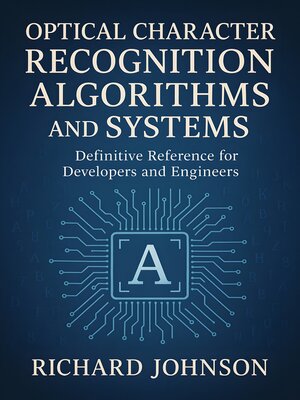Optical Character Recognition Algorithms and Systems
ebook ∣ Definitive Reference for Developers and Engineers
By Richard Johnson

Sign up to save your library
With an OverDrive account, you can save your favorite libraries for at-a-glance information about availability. Find out more about OverDrive accounts.
Find this title in Libby, the library reading app by OverDrive.



Search for a digital library with this title
Title found at these libraries:
| Library Name | Distance |
|---|---|
| Loading... |
"Optical Character Recognition Algorithms and Systems"
Designed for researchers, engineers, and advanced practitioners, "Optical Character Recognition Algorithms and Systems" offers a comprehensive exploration of the theory, algorithms, and architectures underpinning modern OCR technology. The book begins by grounding the reader in the mathematical formalism and theoretical foundations essential for understanding character recognition, tracing the historical evolution from early optical readers to artificial intelligence-powered systems. It presents a thorough taxonomy of OCR engines and delineates the rigorous benchmarking protocols required to assess advancement in this field.
Covering the entire OCR pipeline, the text delves deeply into document image acquisition, preprocessing, and segmentation—addressing challenges posed by varied input devices, physical and digital noise, and complex page layouts. Subsequent chapters explore sophisticated feature extraction techniques, from classical handcrafted features to state-of-the-art deep learning representations, and provide an authoritative treatment of recognition models, including statistical classifiers, kernel methods, and advanced neural architectures such as attention mechanisms and transformers. The book pays particular attention to multilingual and handwritten text recognition, describing domain-specific algorithms, script detection strategies, and the unique obstacles presented by cursive and overlapping characters.
Rounding out its approach, the book analyzes essential postprocessing techniques—including error correction, language modeling, and active learning—as well as practical considerations for deploying OCR at scale. Readers will find in-depth discussions on modular and real-time architectures, integration with enterprise workflows, and security and privacy in distributed systems. The concluding chapters highlight the latest advancements, from scene and video text recognition to augmented reality applications, and outline open research challenges, making this volume an indispensable reference for anyone advancing the state of document analysis and recognition.







